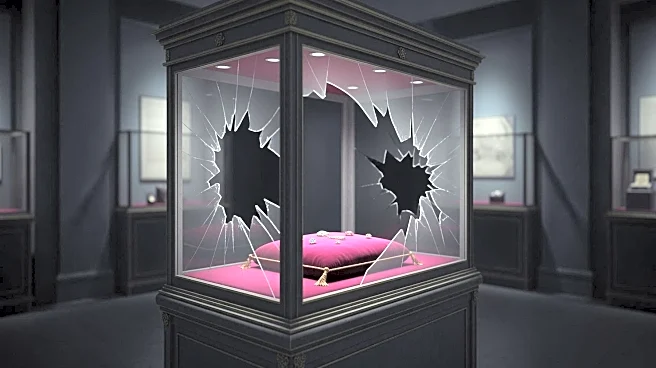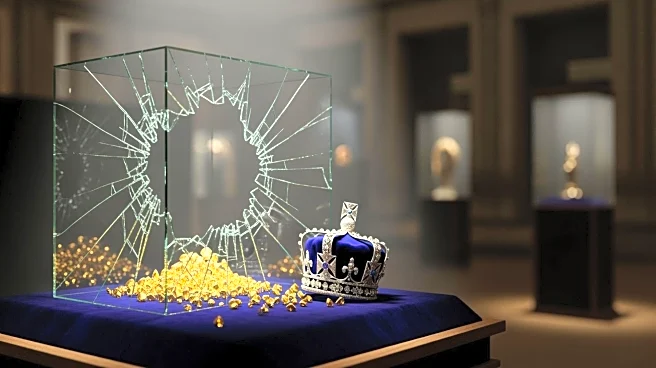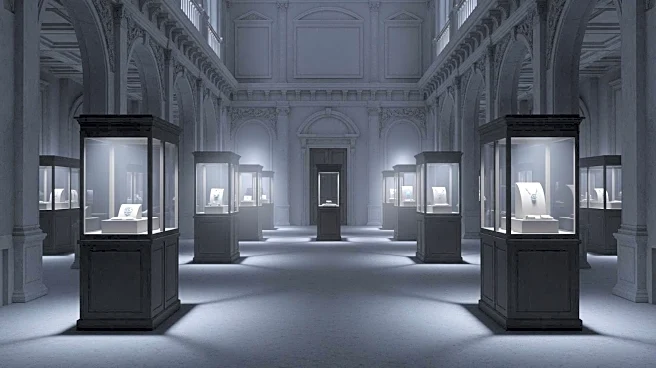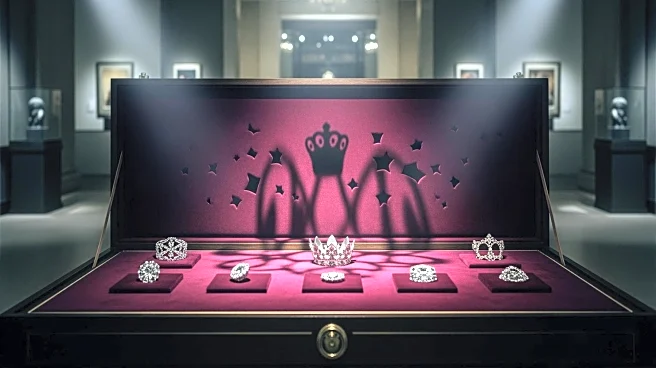What's Happening?
French police are urgently seeking to recover crown jewels stolen from the Louvre Museum in a daring heist. The theft involved eight items, including a tiara and necklace, and was executed in under eight minutes.
Experts fear the jewels may have been dismantled and smuggled out of France, making recovery difficult. The heist is suspected to be linked to organized crime, with the stolen items potentially used for money laundering. Authorities are analyzing evidence left at the scene, including a vest and equipment, to identify the perpetrators.
Why It's Important?
The theft represents a significant cultural and financial loss for France, as the jewels are both historically significant and valuable. The incident highlights the challenges in protecting cultural heritage from organized crime and the potential for such items to be lost forever. The theft may lead to increased security measures at museums and cultural institutions, impacting their operations and visitor experience. The loss of these jewels affects France's national identity, as they are part of the country's patrimony and hold emotional significance for many.
What's Next?
The investigation is ongoing, with police focusing on identifying the organized crime network behind the heist. Authorities are hopeful that DNA evidence from the scene may lead to arrests. The Louvre remains closed, and security measures are likely to be reviewed and enhanced. The theft may prompt discussions on international cooperation in recovering stolen art and the role of private collectors in the illegal art market.
Beyond the Headlines
The incident raises ethical questions about the preservation of cultural heritage and the responsibilities of museums in safeguarding historical items. It highlights the vulnerability of cultural institutions to organized crime and the challenges in protecting valuable artifacts. The theft may lead to discussions on improving security at cultural sites and the importance of international cooperation in recovering stolen art.











